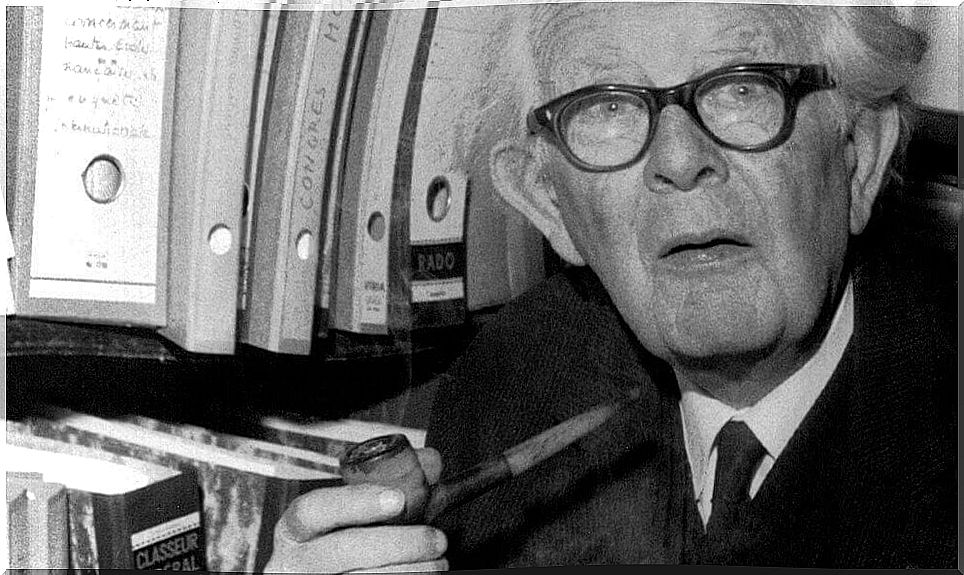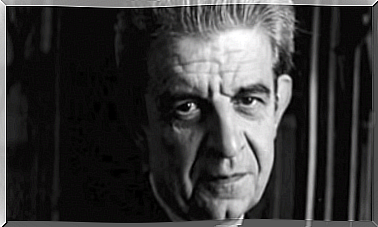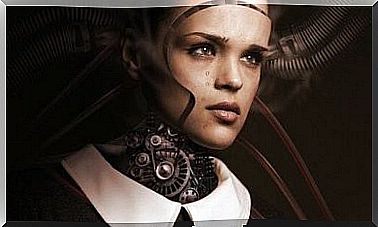The Adventure Of Knowing Children’s Cognitive Development Through The Eyes Of Piaget

Jean Piaget is one of the great references in the study of children’s cognitive development. He dedicated his entire life to studying childhood, even investigating his own children to uncover the secrets of development. He is also known along with Lev Vigotsky as one of the fathers of constructivism.
One of the most famous theories of Jean Piaget is his division of the infantile cognitive development in four differentiated stages. Piaget was looking for a theory that would explain the general development of the infant. However, today we know that it leaves many aspects unvalued to take it as a theory of general development; even so, this classification is a useful guide to understand how we develop our logical-arithmetic ability in childhood.
The stages of child cognitive development
Many psychologists thought that development was given by a cumulative phenomenon, where new behaviors and cognitive processes are generated. On the other hand, Piaget, after his studies, formulated a theory of development based on qualitative leaps; where the infant would accumulate capacities, but sooner or later this accumulation would make him change his way of thinking in a qualitative way.
Piaget divided children’s cognitive development into three stages with a series of substages, later expanding it to four. These four stages are: (a) sensory-motor stage, (b) preoperative stage, (c) stage of concrete operations, and (d) stage of formal operations.

Sensory-motor period
This stage is prior to the appearance of language, it extends from birth to approximately two years. This period is characterized by the child’s reflex ability. The life of the infant in this period is based on relating his perceptual and motor skills. There are only practical concepts in his mind, such as knowing what to do to eat or to get his mother’s attention.
Little by little, throughout this period, the child generalizes the events in his environment and creates diagrams of how the world works. Due to the intersection of the schemes, the infant develops the permanence of the object, understands that objects exist as entities outside of him. Before implementing this idea in their diagrams, if the child cannot see, hear and touch an object, they would think that it does not exist.
The end of this stage is marked by the appearance of language. The language of the child involves a profound change in their cognitive abilities. This is usually accompanied by the semiotic function: the ability to represent concepts through thought. The child would go from having a purely practical mind, to a mind that also acts on a representative level.
Preoperative stage
This stage can be located between two years and seven. Here we are in a transition period where the child begins to work with his semiotic capacity. Even though he has already achieved a level of representation, his mind still differs quite a bit from that of an adult. Here we find an “egocentric” thought.
The child is “egocentric” because his thinking is totally self-centered. The infant is unable to distinguish the physical from the psychic, and the objective from the subjective. For him, his subjective experience is the objective reality that exists in the same way for all individuals; this shows us a lack of the Theory of mind. From the age of 4 he would begin to abandon this egocentricity and develop a Theory of the mind.

At this stage we also see problems in the child to understand that the universe is changing. It is able to understand states, but not the transformation of matter. An example of this, when a child at this stage is shown a full glass of water and we change that water to a narrower but taller glass, the child will think that there is more water than before: he is unable to understand that transforming something is not changes the amount of matter existing.
Stage of concrete operations
This period extends between seven years and 11 0 12. At this stage the child has managed to abandon the full confidence he had in the senses. Here we can see the development of a series of concepts, such as shape transformations do not alter the amount of matter.
The infant begins to build a logic of classes and relationships alien to perceptual data. The child understands transformations and will be able to understand that they can be given in reverse (add rather than remove, for example). And an important aspect is that you will be able to perform these operations by representing them in your mind, without having to perform them with present objects.
Although you control operations and logic, you can only perform them on specific objects that you know how to behave. He is unable to theorize about what he does not know or is out of his perceptual knowledge. This ability will be achieved in the next stage.
Formal Operations Stadium
This is the last stage of development where the infant will transform into an adult on a cognitive level. This stage is characterized by the acquisition of scientific thought. The child can no longer reason only about the real, he can also reason about the possible.

This period is characterized by the ability to hypothesize and examine the possible consequences of these hypothetical possibilities. The child has greatly improved his testing procedures and does not accept opinions without scrutiny.
From this moment the infant will begin to acquire new knowledge and intellectual instruments. These will allow you to develop as a competent adult within society. However, from this moment on you will no longer undergo any other qualitative leap : you may be faster or more precise when it comes to your mental operations, but you will think in the same way.
Now that we know Piaget’s theory of child cognitive development, do you think that children develop through these stages, or perhaps this theory falls short in explaining human development in its entirety?









